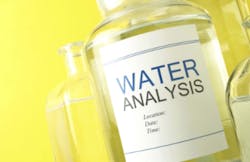Researchers assess water quality near industrial sites in Missouri for BPA contamination
RESTON, Va. — Elevated levels of Bisphenol-A (BPA), a chemical used in consumer products such as plastic food storage and beverage containers, have been determined by existing research to be deposited directly into streams and rivers by industrial or municipal wastewater, according to a press release.
University of Missouri and U.S. Geological Survey (USGS) researchers have recently assessed the water quality near industrial sites in Missouri permitted to release BPA into the air, stated the release.
As a result of this assessment, scientists believe atmospheric releases of BPA may create a concern for the contamination of local surface water, leading to human and wildlife exposure, reported the release.
“There is growing concern that hormone disruptors such as BPA not only threaten wildlife but also humans,” said Chris Kassotis, a doctoral candidate in the Division of Biological Sciences in the College of Arts and Science at MU. “Recent studies have documented widespread atmospheric releases of BPA from industrial sources across the United States. The results from our study provide evidence that these atmospheric discharges can dramatically elevate BPA in nearby environments.”
Water sampling sites were selected based on their proximity to the Superfund National Priorities List (NPA) or to locations with reported BPA atmospheric discharges identified by the U.S. Environmental Protection Agency, informed the release.
Also tested were current or historical municipal wastewater treatment sites, which have been shown to contribute hormonally active chemicals to surface waters from industrial or urban sources, noted the release, and relatively clean sites were selected to serve as the control group.
Read the entire release here.
